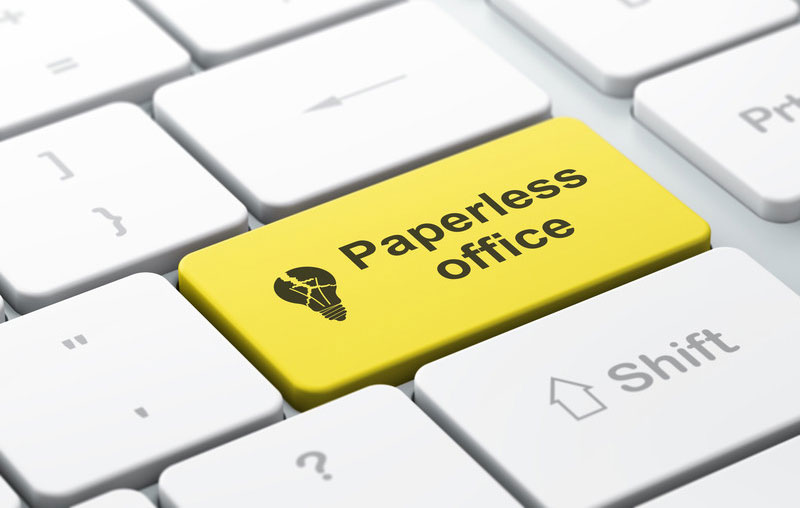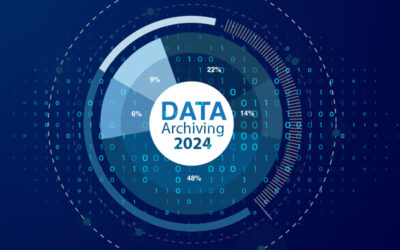The legal sector is a paper-intensive industry. Every day, they have to tackle thousands of documents. Nowadays, most lawyers understand the benefits of moving toward a paperless law office. However, many of them are worried about how to move forward with this objective, given the many requirements to meet and the investment to make. The simple solution is to partner with a professional document scanning company to scan existing paper documents and convert them into the required digital format. These documents can be stored safely in storage devices or cloud systems.

To make the process of digitization and going paperless easy in 2019, here is a month-by-month plan to follow as compiled by Larry Port in a January 25th post in lawtechnology.org.
January: Make a commitment to starting slowly and proceeding step-by-step
If you want to go paperless, then commit to it and realize that when this 12-month plan ends, your office will start to operate with a lot less stress and waste. Moreover, you can run your law practice much more efficiently. Therefore, make a commitment in the month of January, plan the process, and then you can go ahead with the process step by step. Approach the project with confidence and determination and do not be deterred or knocked off-track by obstacles.
February: Define the process
It is imperative to define how you will handle two situations. First, how you will handle internally created documents and second, how you will handle externally created documents. When this process is defined, create a checklist that your staff must follow and everyone needs to follow the same steps.
March: Define your overall folder structure and file naming conventions separately from your overall paperless workflow
As part of your process review, you and your team may be confused as regards how to name something and where to put it. For this reason, define your overall folder structure and file naming conventions (FNC) separately from your overall paperless workflow. This in turn will help build momentum and make things simpler.
April: Get desktop scanners or outsource document scanning tasks
Get desktop scanners and put them on everyone’s desks. However, this can cost you thousands of dollars, and training the staff also involves time and money. Outsourcing document scanning tasks to a professional document scanning company could help save costs and valuable time. With advanced scanning equipment and high-end software, document scanning service providers can convert your paper files into various digital formats such as TIFF, JPEG, GIF, PDF and others. Outsourcing allows your employees to stay focused on generating revenue for your business. It will also result in a more efficient, higher quality digital conversion with significantly better accuracy.
May: Select an online file storage provider
It is recommended to choose an online storage provider such as Google Drive, iCloud OneDrive, or pCloud that syncs automatically with your desktop or laptop. Smaller law firms could consider specialized document storage tools like Dropbox, Box, iCloud, or OneDrive and larger organizations can choose from NetDocuments, Box, or Google Drive. Alternately, choose an experienced document scanning company to work with that can implement a document management system which provides storage, security as well as indexing and retrieval capabilities. Such a company will ensure that your documents are properly scanned, tagged, and indexed; then they will upload them to a cloud storage service that can be accessed from anywhere at any time. Cloud services can ensure flexibility and reduce costs by eliminating the labor and onsite storage requirements for your business.
June: Automate the billing and collections
Sending out paper bills and waiting for checks is one of the biggest hassles in a law firm. This cumbersome process requires many people-hours and is a slow way to collect revenue. With paperless billing, you may click a button and invoices are emailed out to clients. The clients can then pay online with their debit or credit cards and you will get your money the following day.
July: Use document assembly software to automate the documents
Document assembly software allows you to click a button and create a document from fields you have saved in a database. This technology will help you draft even the most complex documents in a fraction of the time it would take using other methods. It also helps prevent drafting errors. It is recommended to use it to expand your knowledge and add this critical skill to your toolset. Popular document assembly software includes HotDocs, AIA Contract Documents, DirectLaw, Blumberg Excelsior, Rapiddocs etc.
August: Utilize summer slowdown to scan backlog
Scan only the active documents that you are working on. It may be better to approach this task little by little and start doing it gradually throughout the year. When the business slows in August, take advantage of the downtime to make a dent in your scanning backlog.
September: Adopt mobile paperless tools
Use smartphone cameras to scan any document and this document will be saved as an image or PDF file on your device. One of the popular PDF tools, iAnnotate makes it possible for you to write on PDFs using a tablet.
October: Automate more complex documents and pleadings
It is essential to make a list of the top 10 documents your law firm creates on a regular basis and convert those into document templates. You should learn what Microsoft Word can do with mail merge fields, such as if-then-else logic, prompting for questions, and special formatting. You can switch pronouns based on gender, swap paragraphs out based on conditions and reduce the errors as well as time in document production.
November: Realize that it is fine to use some paper
You may find that some paper documents still exist, and may continue to exist. That is fine. It is not necessary that all documents are digitized. Paper could be still important to even the most paperless of law firms. Many professionals find it best for note-taking. Handwritten notes are special and have a singular appeal to many of us who love the feel of our favorite pen in our hands.
December: Plan Improvements for 2020
Now you don’t need to spend time looking for files. You can view the files from anywhere. It also allows you to work from home more. As creating documents takes only a single click, you will be having more time on your hands. Since you are converting to electronic payments, you will be collecting more money than ever.
Following this month-by-month advice and taking it step-by-step, by the end of the year you will be prepared for success going forward.



